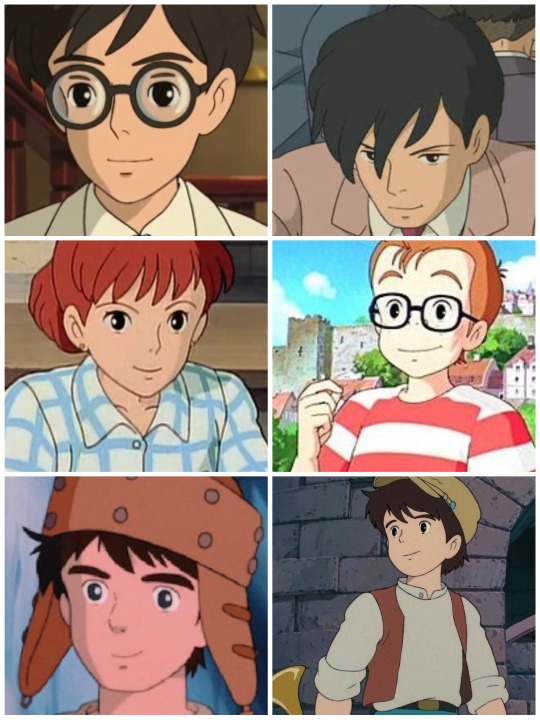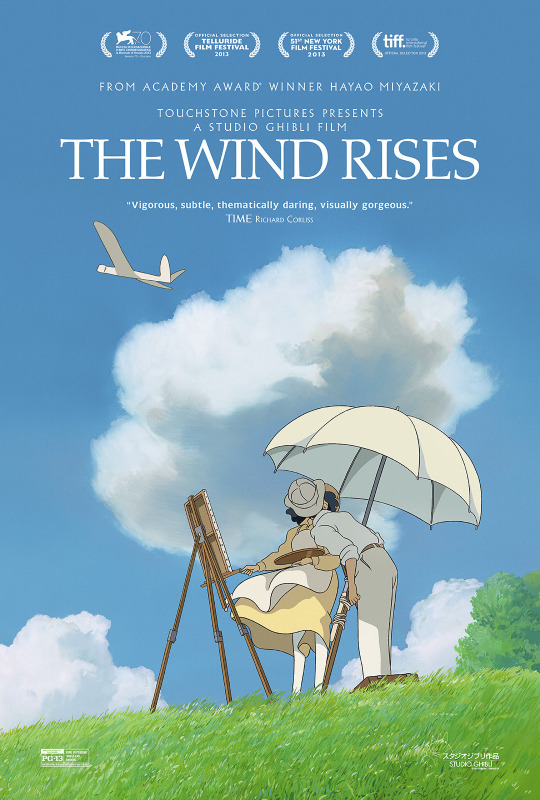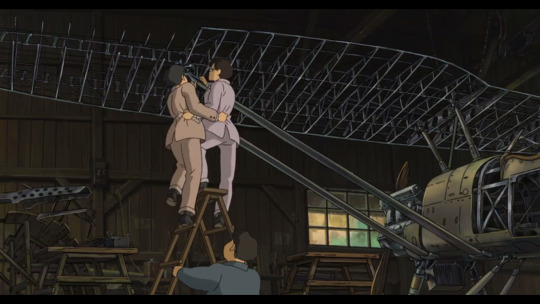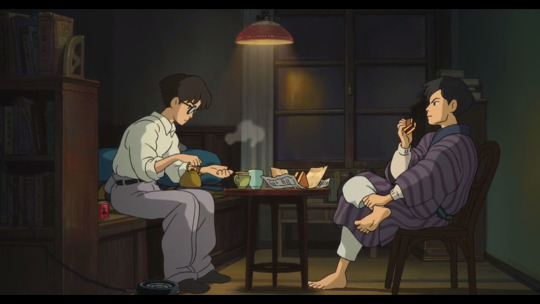#jiro honjo
Explore tagged Tumblr posts
Text



Yakuza 6 / Ryu Ga Gotoku 6
The Song of Life
#yakuza 6#ryu ga gotoku#ryu ga gotoku 6#like a dragon#the song of life#gaming#haruka sawamura#kiryu kazuma#kazuma kiryu#jiro honjo
12 notes
·
View notes
Text
Airplane Nerds

#jiro horikoshi#the wind rises#kiro honjo#fio piccollo#porco rosso#tombo#kiki's delivery service#asbel#nausicaä of the valley of the wind#pazu#castle in the sky#airplane#nerds
20 notes
·
View notes
Text

Honjo/Jiro sketch duduhdudhdhc they’ve been on my mind so much lately it’s gotten pretty annoying they’re like little pests who I have to keep batting at with a broom
4 notes
·
View notes
Text


them.
#so i’ve been watching this movie all day bc i have the shittiest attention span and NAWT THEM MEETING AGAIN ONLY HALFWAY THRU THE MOVIE#slowburn 😭 but im here for it!!#irl said i wld hate this movie just like ocean waves but so far actually so good#i didnt initially give a shit abt jiro and his airplanes but i started liking him more as the story progressed#not that he wasnt unlikeable to begin with he was such a nice dude#also me: is that honjo#idk what happens next and i might be speaking too soon but this scene was just lovely ☹️#toff.txt#now watching
4 notes
·
View notes
Text
2/23 readings

To round out this week, we watched The Wind Rises. This movie also focuses on the war years in Japan, but this time from an adult's perspective who is contributing to the war effort directly, rather than from a helpless child's perspective.
The subjects of technological advancement and dreams take up a large amount of space in the story.
Jiro and his friend/colleague Honjo often comment on how behind the times Japan's technologies are in comparison to the rest of the world (and especially Germany). This reminded me of past readings we've done for this class, particularly ones that have mentioned that after Japan surrendered, many Japanese people cited the lack of technological advancement in Japan as the reason why they lost the war. A lot of the frustration Jiro experiences while designing his fighter planes comes from the fact that the materials he is forced to use are insufficient and require large workarounds. When we see his flight tests fail, it is frustrating to watch because we want Jiro as our kindhearted protagonist to fulfill his dreams, but it is impossible to ignore the fact that the planes he designs are going to be used to for war.
The ending scene of the film, when Jiro and Caproni meet again in one of Jiro's dreams after the war, addresses this conflict. Jiro expresses regret over the way that things turned out with the war and over how his planes were used, but Caproni comforts him, calling his plane design "masterful" and telling Jiro that "there was nothing [for the fighter pilots] to return to." I'm honestly not sure how I feel about this. I can empathize with the tragedy of Jiro's dream to build fantastic planes being perverted by the war, but it's hard for me to fully accept the waiving away of responsibility simply because he is a creative with a dream.
3 notes
·
View notes
Text
The wind rises
This is my comfort movie, this holds a special place in my heart.
The Wind Rises is the story of Jiro Horikoshi, the man who designed Japanese fighter planes during World War II. Jiro dreams of designing beautiful airplanes, inspired by the famous Italian aeronautical designer Caproni. The film follows him from childhood to his final accomplishment during very dark and deprived times in Japan. Along the way he meets his future wife Nahoko, is often accompanied by his best friend and fellow aeronautical engineer Honjo, and constantly runs foul of his uptight boss Mr Kurokawa.
This is portrayed no differently than Miyazaki’s previous fantasy films. Although Jiro is able to achieve his goal, he solemnly shows remorse over the use of his art as weapons of mass destruction. Similarly to Jiro’s own aspirations to make beautiful airplanes, Miyazaki’s purpose in creating The Wind Rises is simply because he wanted to make something beautiful.






12 notes
·
View notes
Text
you're telling me jiro and honjo didn't fuck? sure ok
4 notes
·
View notes
Text
2/23 The Wind Rises
This story was really beautifully told with an underlying somber tone. Studio Ghibli is really well known for beautiful animation with bright colors and that transposed with a darker story was really powerful. Obviously as viewers we know the impact and we know the outcome but you still can't help but root for a little boy's dream to come true and that love can overcome any obstacles.
I did take note of this kind of interesting dynamic where Jiro cares about his family and Nahoko but both still remain less important than helping Japan "catch up" with the rest of the world. Both Jiro and Honjo repeatedly lament over how supposedly inadequate Japan is in comparison to other countries and make risky concessions to achieve the fastest planes possible. Kayo scolds Jiro for not coming home more and Nahoko is left alone all day while he works away as she becomes weaker and weaker.
Flight is something that has always seemed to fascinate humanity. Despite all the things humans CAN do, that remains illusive without the help of specialized machinery. Yet it is heartbreaking true enough what Mr. Caproni says about how planes have made the world better but at the great price of mankind using them to do horrible things. This echoes true for technology as a whole. Oppenheimer's breakthrough had catastrophic consequences. Technology that supposedly make us all more connected if anything makes us more isolated than before. The perversion of Jiro's dream to build beautiful airplanes is yet another rendition of the same tragic narrative, innocent people whose dreams and lives were forever changed by the war.

1 note
·
View note
Text
from the village voice article linked ("The Trouble with The Wind Rises" by Inkoo Kang):
In The Wind Rises, Miyazaki uses real-life aircraft engineer Jiro Horikoshi as an extreme example of ordinary Japanese citizens’ indifference to the atrocities committed in their name. Jiro, as he's referred to in the film, finds such beauty in airplanes and flight that he feverishly pursues the next level of killing machines for Mitsubishi, justifying his work by comparing his planes to the pyramids. The reference to the pharaohs might allude to the fact that Mitsubishi used Chinese and Korean slave labor to build Jiro's Zero planes. But the character never considers whether the slaves who died making those pyramids might not believe the results were worth their lives. Jiro represents the moral myopia of the imperial Japanese citizenry and of the aesthete. His shortsightedness is quite literally symbolized by his Harry Potter-esque glasses, which, paired with his lavender suits, make him look perpetually youthful and innocent. (Yes, he's animated, but his boss appears much older and his friend Honjo less boyish.) Like most biopics, The Wind Rises is guilty of a bit of hagiography. Early in the film, Jiro is a good Samaritan who rescues a little girl from a train wreck. But his goodness and innocence have a pathological purity to them, too, as illustrated by his devoted but sexless marriage to his sickly wife. It's that dedication to an ideal of “purity” — whether it be of aesthetics, nationalism, or ethnicity — that Miyazaki subtly condemns in his film. But The Wind Rises declines to challenge mainstream Japanese society's distortions and denials of its wartime atrocities. Worse, it echoes Japan's morally dishonest stance that it was a victim, rather than a perpetrator, of a global war — a whitewashed version of history that the film now imports to every country where it plays.
already not a fan of critical thinking means pretending your favorite mainstream works are especially subversive brand of post but "ghibli is anti imperialist" is sending me. let's start with the wind rises village voice review, okay?
#nausicaa is the one film with the closest resemblance to eco-justice and anti-war and radical politics#the wind rises bamboozled me in the worst way possible -- in the 'shocked but unsurprised it's acceptable in japan to make films that are#wishy-washy about anti-war politics at best and imperial apologia at worst' way#studio ghibli#discourse
1K notes
·
View notes
Text





#yakuza 6#ryu ga gotoku#ryu ga gotoku 6#like a dragon#gaming#kiryu kazuma#kazuma kiryu#makoto date#jiro honjo#kazuchika okada#the rainmaker#new serena mama#tsuyoshi nagumo#yuta usami
3 notes
·
View notes
Text
Andrew’s Thoughts on Mary Poppins Returns, The Wind Rises, and Ponyo
Thoughts on Mary Poppins Returns: An 8/10. It may have ended up feeling like the original too much with its similar and kind-of predictable story, and have an unnecessary and not well developed villain, but it successfully retained the feel of the original with its charming tone, songs that are rather memorable and do feel like they came from Mary Poppins (though maybe not in the same levels as the original), nice performances from the cast, including Emily Blunt, Lin Manuel Miranda, and a cameo from Dick van Dyke, and great visuals and choreography, especially with the hand-drawn sequence.
Thoughts on The Wind Rises: As Hayao Miyazaki’s final film (maybe), he left off on a big bang. The movie shows the life of Jiro, a young man who ends up designing airplanes for the Japanese military. But Jiro doesn’t make planes that are ultimate weapons or make planes for the sake of his country, he merely wants to create something that is beautiful, which unfortunately ends up paining him that something beautiful becomes corrupted for destruction. The idea of something beautiful being easily corruptible is a big theme of the film, and can provide tons of stuff to think about. The film also shows the relationship between Jiro and Nahoko, and without spoiling the movie, it definitely provides an emotional and heartbreaking part of the film.
Of course the backgrounds, character design, and animation is as good as it always is, but what makes this stand out is how it shows the elegancy of a plane in flight, along with the dream sequences providing some creativity. It may not have as much innovating moments as the other Studio Ghibli movies, but it probably wouldn’t be considered a bad thing. I’ve already discussed Jiro and technically Nahoko, but there are also other characters. There could be a possibility that they’re overshadowed by the main two characters, but they still get enough screentime for us to look at them. Honjo is Jiro’s friend who’s pessimistically dismayed about Japan’s technology being behind other countries; Kurokawa is Jiro’s hot-tempered boss, though he isn’t too heartless; Kayo is Jiro’s sister who wants to become a doctor and tries to help out Nahoko; and Mr. Castorp is an interesting character who helps out a bit with the romance between Nahoko and Jiro, while also presenting himself as a mysterious figure who may know more than we think (possibly a German or Soviet official on the run). (On a sidenote, there is something in Castorp’s voice that I can’t help but associate with the word snake. You’d get what I mean through watching either the English or Japanese dub.) In short, The Wind Rises is a great film, and could be considered Miyazaki’s equivalent to Isao Takahata’s Grave of the Fireflies. Story: 10/10. Animation: 9 or 10/10. Characters: 9 or 10/10. Overall: 9 or 10/10.
Finally, to end off on a positive note, I’ll try to discuss Ponyo. Ooh boy, was that a Weird one. Honestly, I’m not sure how I should feel. With the odd childlike tone, the characters treating almost everything nonchalantly or acting oddly and not like expected, and some parts of the story feeling unexplained or more serious than other parts, it makes it seem not as great as the other Ghibli movies. But maybe I’m just being crazy and am failing to see how this could be a nice film to be enjoyed by children, I don’t know. As for the characters, other than what I said, they’re mostly two-dimensional and not as complex as other Ghibli characters, with some feeling like there could have been development for them. As for the animation, it has a more kid-friendly feel like it came from a kids book, but still has the good stuff from other Ghibli films, with a nice and creative look for the sealife. Story: 7/10. Animation: 10/10. Characters: 6/10. Overall: 8 or 7 or 7.5/10.
Random Lines At End: 1: Kurokawa: Jiro, let’s go get some coffee. Jiro: But, I’ve got to go to a... Kurokawa: Cancel it. (Closes door.) 2 (in Japanese): Kurokawa: Jiro, we need to talk. Jiro: I’ve got a meeting. Kurokawa: Cancel it. (Closes door.) 3 (English): Jiro: Schubert’s Winter Journey. (Audio plays.) Honjo: Well, that’s perfect for us. A masterpiece of misery and woe.
#studio ghibli#hayao miyazaki#ponyo#the wind rises#mary poppins#mary poppins returns#animation#review
0 notes
Text


more Honjo/Jiro )) go watch the wind rises
1 note
·
View note
Photo

Character Introductions
Daidoji Minori Tatsukawa Shu Honjo Jiro
From the Yakuza 6 guidebook, 龍が如く6 命の詩。 完全攻略極ノ書 (ファミ通の攻略本)
4 notes
·
View notes
Photo

The Wind Rises (2013)
#the wind rises#stuido ghibli#jiro#nahoko#ghibili#film#animation#airplane#anime#mr kurokawa#castorp#honjo#my edit#studioghibligif#hayao miyazaki
19 notes
·
View notes
Photo


16 notes
·
View notes
Photo



#the wind rises#kaze tachinu#movie#romance#jiro horikoshi#historical#caprioni#naoko satomi#studio ghibli#honjo#anime#anime movie#anime gif#gif#my gif#anime aesthetic#aesthetic#<3#studioghibligif#studioghibliedit#ghibliedit#ghiblicinema#dailystudioghiblis#dailyghibli#gifset
700 notes
·
View notes